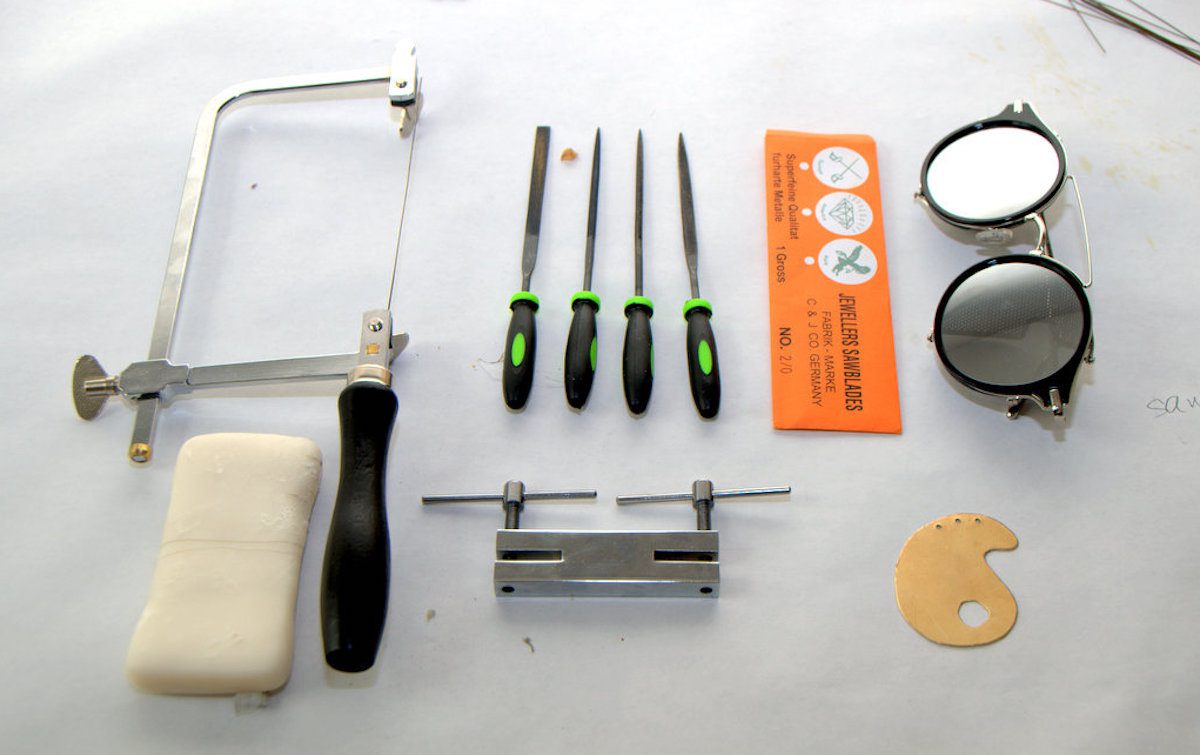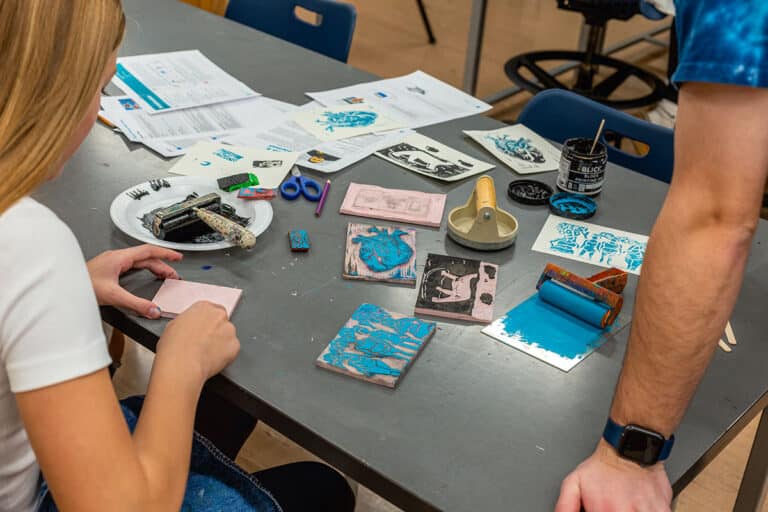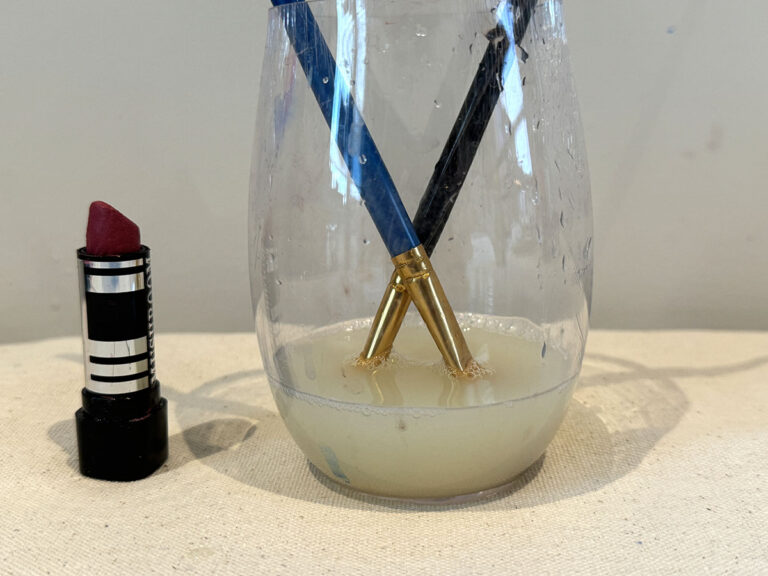Have you ever had to teach a class without any experience or knowledge about the topic?
I’d never made jewelry or taken a metals class, yet there it was, on my schedule. There were tools I’d never seen before and a bin filled with torches. (Was I really to give my students torches?!) I asked for help, read books, and spent a lot of time on YouTube, realizing it didn’t need to be as intimidating as I was making it out to be. I learned a lot the first year, and so did my students. Being able to create wearable art is magical. Here are the first skills my students and I learned together.
A Beginner’s Guide to Making Metal Jewelry in the Art Room
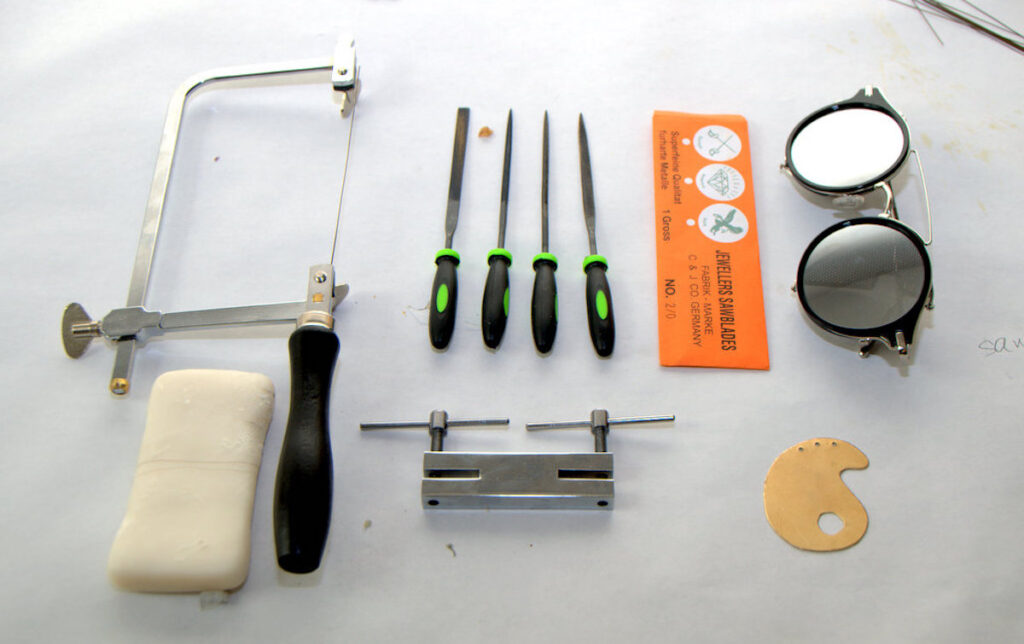
Step 1: Gather Materials
Of course, the materials you’ll want to gather will depend on exactly what you want students to make. However, the list below is a good start.
- Sheet Metal (22 gauge)
- Jewelry saw frame
- Jewelers saw blades (No.2/0)
- Bench pin (optional)
- Metal hole punch
- Sandpaper (assortment of 180-2000 grit)
- Polishing cloth
- Bar of soap or wax
- Saftey glasses
- Pliers
- Wire cutters (optional)
- Computer or tracing paper
Step 2: Gather Inspiration
Jewelry supplies are an investment well worth the cost. High school students love the opportunity to create professional-quality jewelry. There is no erasing or “undo button” when comes to working with metal, so it’s important for students to have a detailed plan before they make the first cut. Have students look through magazines or Pinterest to create an inspiration board.
5 Contemporary Jewelry designers to explore:
- Ashley Buchanan
- Gabrielle Desmarais
- Edson Enriquez, designer for Limbo Jewelry
- Scott Cummings, Creative Director for Base Modern
- Ana Pina
Step 3. Sketch Design Ideas
Have students create sketches, making sure they are accurate in scale and design. Draw the final sketches on tracing or computer paper, then cut out to create a template.
Cutting metal is time-consuming and can be quite challenging for a beginner. Therefore, I recommend having students start with a simple shape. Trying something too complex too soon can lead to students feeling overwhelmed and giving up.
Step 4. Prepare to Cut
We’re all familiar with the agony that is a student cutting a small shape out of the middle of a piece of paper. Guess what? They do it with metal, too. Be sure to remind them to place their shape as close to the edge as possible. If their design has a straight edge, align it with an existing straight edge.
Have students take their paper template and glue it onto the metal using a glue stick or rubber cement. The glue will rub off the metal when finished.
Make sure the glue is dry and the paper held in place before cutting.
Step 5. Use the Jewelry Saw
Before students start cutting their metal, they need to learn to use the jewelry saw.
All students must wear safety glasses. Jewelry blades are thin and often break under pressure, which sends them flying through the air.
After everyone has their safety glasses on, teach students how to put the blade into the saw frame. Blades need to be facing out and down. They also need to be tight, if the blade bends or gives under pressure it won’t cut well.
Contrary to what your students may think, a jewelry saw needs only a little pressure to work. Allow the blade to lead and move it in a vertical motion.
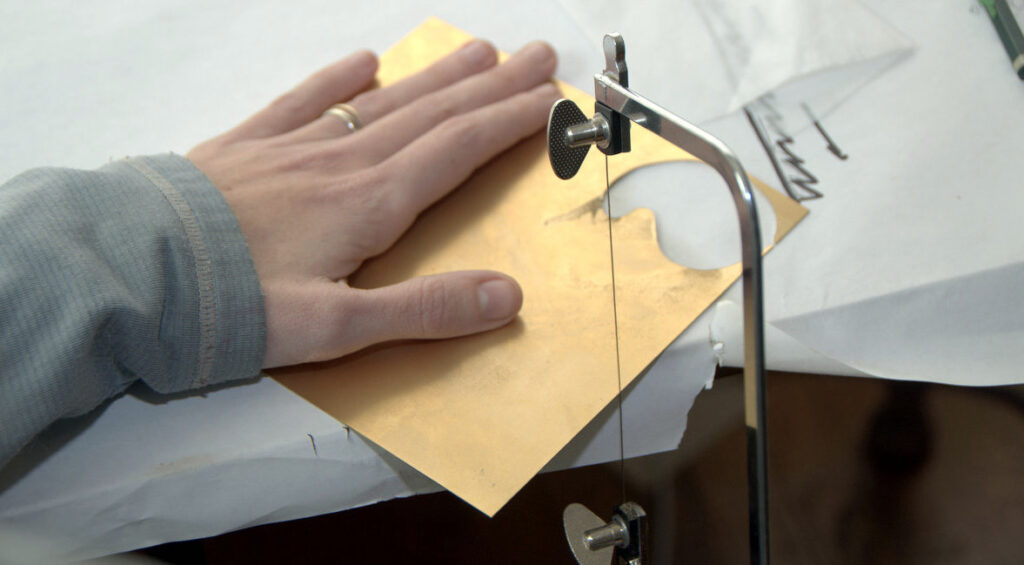
If you have bench pins, you’ll want to attach them to the tables. Bench pins help to ensure students aren’t cutting through the table. My tables have extremely thick edges, so bench pins don’t fit. Students cut with their piece on the table, and work to be aware of the edge.
Allow students to take breaks, making it less likely that they’ll break their blade. Do not lay the metal down with the blade still in the cut as it will break. Instead, loosen one end of the blade from the saw frame. Then pull the blade down until it is free from the cut.
Students may create a design that requires cutouts within a shape. To make these cuts, you’ll need to pierce a hole into the metal using a drill or metal hole punch. I prefer a metal punch as it’s easier and doesn’t risk sending a piece of metal flying through the air. Once finished, thread the saw blade through the hole and begin cutting.
Step 6. File the Edges
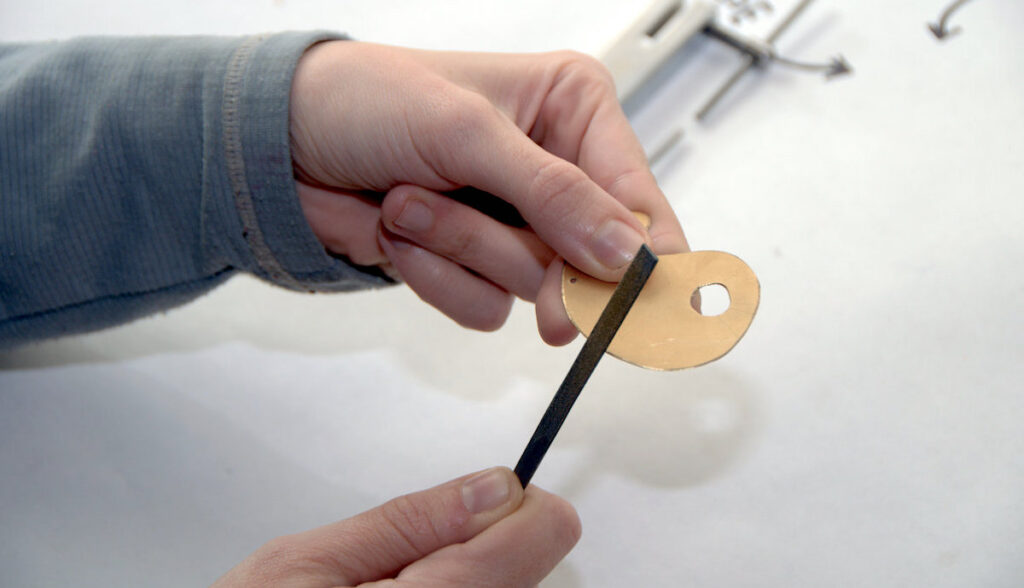
Once the piece is cut out, it’s time to remove the paper template, rub off the glue, and make the edges smooth. Use jewelry files around the edges, making sure to only file in one direction. Moving in both directions will quickly dull the file. File the front and back of the piece, creating a beveled edge.
Step 7. Sand and Polish
Remove all scratches and blemishes by sanding. Start with 180 grit continuing to move to finer sandpaper until the piece looks smooth and shiny. Finish by wiping with a polishing cloth.
Step 8. Add Finishing Elements
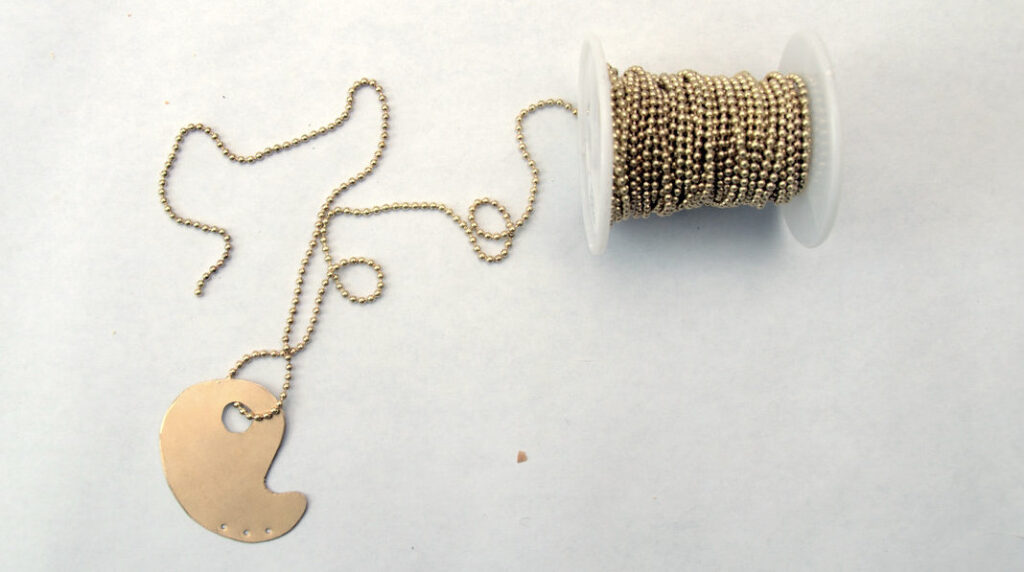
At this point, students need to add elements like a chain for a necklace or hooks for earrings. After determining how the piece should hang, use the metal hole punch to create holes, and add a jump ring to attach the chain or earring hooks. You can buy jump rings or teach students how to make them. To make jump rings, wrap the wire around a pencil, then cut one coil at a time with wire cutters.
Using two pairs of pliers, one on each side, turn one toward your body and the other away causing the jump ring to open. Close the jump ring using the same technique.
Working with metal takes patience and practice, but the results are worth the work.
Have you ever had to teach a class without any experience or education on the subject?
When you’re looking for handmade jewelry, what are your go-to shops, websites, or designers?
Magazine articles and podcasts are opinions of professional education contributors and do not necessarily represent the position of the Art of Education University (AOEU) or its academic offerings. Contributors use terms in the way they are most often talked about in the scope of their educational experiences.
